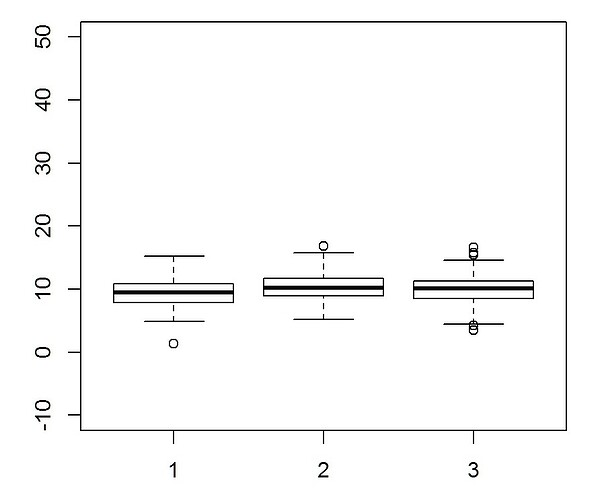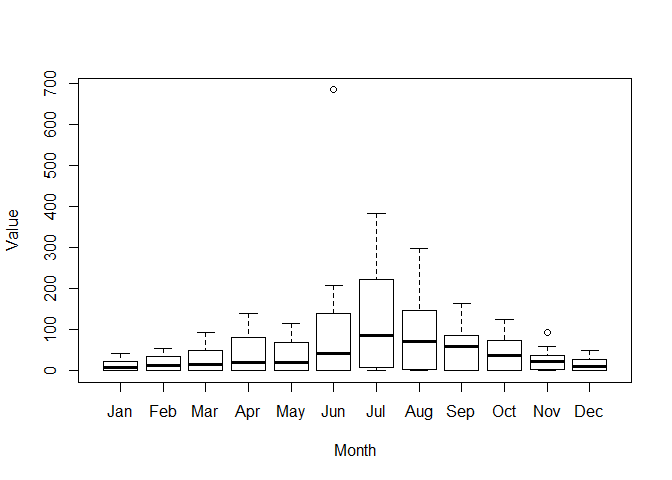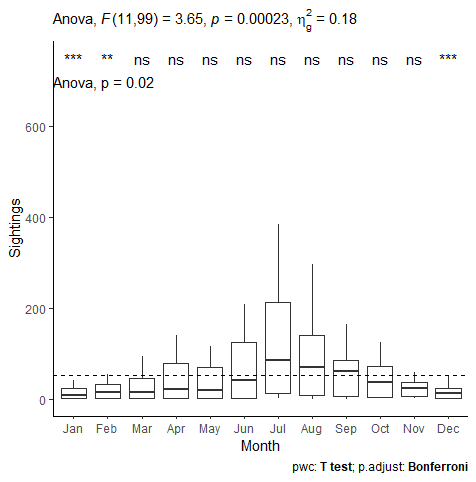I am an R novice and trying to perform a repeated measures anova to compare each month against the same month across all 10 years (e.g. Jan 2010, Jan 2011, Jan 2012 and so on... for each month). And then with the final results I would like to plot this into a boxplot as such with a new box for each month like in the image?
I have fiddled around on various tutorial but unable to reach a success. Any help appreciated thanks so much!
The code below is how I have been inputting the data into R to create the data.frame in the format below.
Year Jan Feb Mar Apr May Jun Jul Aug Sep Oct Nov Dec
2010 0 0 0 0 0 1 1 4 1 1 4 1
2011 0 1 0 1 1 3 7 0 0 2 2 1
2012 0 0 1 0 0 0 3 2 0 2 3 1
2013 2 2 2 6 6 2 33 17 18 9 9 3
2014 5 6 15 18 14 26 60 47 39 19 15 10
2015 10 22 14 24 26 57 110 94 82 73 38 17
2016 22 34 36 64 68 79 223 120 81 56 30 13
2017 23 27 50 82 70 140 243 197 112 102 59 27
2018 42 39 94 140 116 209 384 297 165 124 93 49
2019 37 54 64 127 115 684 178 148 87 67 31 27


